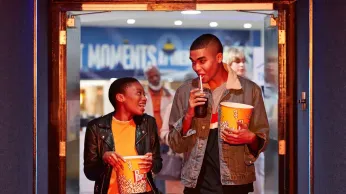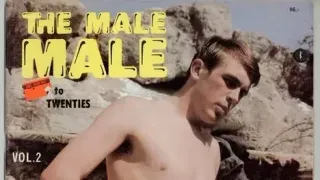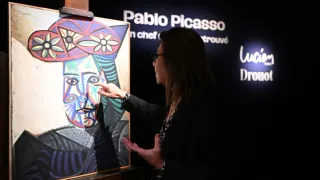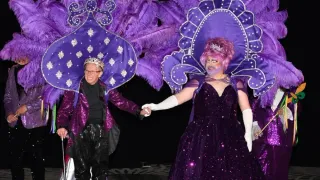
6 hours ago
Lesbian Film Is Finally Fun Again: The Sapphic Rom-Com Renaissance
READ TIME: 4 MIN.
For decades, lesbian representation in film has been defined by heartbreak, secrecy, and untimely endings—a cinematic tradition sometimes dubbed the “bury your gays” trope or the “tragic lesbian” narrative. In 2025, however, a vibrant new wave of sapphic cinema is rewriting that history, filling screens with rom-coms, joyful dramas, and stories that invite laughter as often as tears.
After years of audience demand for more uplifting representation, filmmakers are delivering with a diverse slate of lesbian-centered films that embrace joy, humor, and the complexities of queer love with unprecedented honesty and fun .
This year’s lesbian film calendar is packed with titles spanning genres, cultures, and tones. Among the most talked-about is 'Mother Mary,' A24’s “Epic Melodrama” starring Anne Hathaway and Michaela Coel as lovers whose high-profile relationship unfolds in the fashion and music worlds. Critics and fans alike are eager not only for the star power but for the promise of a story that centers queer women’s agency, humor, and desire—without tragedy as the destination .
Meanwhile, "Egghead & Twinkie" offers a comedic road trip adventure as its protagonist, Twinkie, comes out to her parents and takes off with her best friend to meet her online crush, promising plenty of laughs and relatable moments for queer youth . The film’s lighthearted approach is emblematic of the shift toward stories that allow queer characters to be as messy, funny, and hopeful as anyone else.
Other anticipated sapphic titles include:
- "I Really Love My Husband", a dramedy about a woman’s unexpected attraction to another woman during her honeymoon, threading humor and chaos through themes of self-discovery .
- "Teenage Sex and Death at Camp Miasma", a darkly comic psychological romp from Jane Schoenbrun, now a staple for queer genre innovation .
- International features like "Pooja, Sir" (Nepal), which explores the intersection of queerness and law enforcement with both humor and poignancy, and "The Venus Effect" (Denmark), a romantic drama that balances family tension with the thrill of new love .
This joyful turn is more than a trend—it’s a corrective for decades of representation that left audiences longing for queer stories where happiness wasn’t out of reach. Historically, lesbian films have often ended in loss or isolation, reflecting both the realities of homophobia and the constraints of mainstream cinema . While these stories have value, especially as testaments to resilience, the near-total absence of joyful narratives has long been a point of frustration for lesbian and queer women viewers.
Recent years have seen incremental progress, but 2025’s lineup marks what critics and audiences are calling a “renaissance” for lesbian film—one where love stories don’t have to be cautionary tales, and happy endings are not just possible but plentiful .
What makes this wave even more significant is its global reach. The Roze Filmdagen Amsterdam LGBTQ+ Film Festival, a bellwether for international queer cinema, will feature titles like Belgium-France’s "Queens of Drama"—a high-octane love story set in the music industry—and France’s "Drone," which blends suspense and romance as its protagonist finds love amidst a battle for privacy .
Elsewhere, the Thai film "Flat Girls" and the Indian feature "Kaadhal Enbadhu Podhu Udamai" offer stories that reflect the nuances of sapphic relationships in non-Western contexts, expanding the lexicon of lesbian joy and humor beyond Hollywood .
Comedy is at the forefront of many of these films, as directors and writers experiment with genres previously out of reach for queer characters. The result is a slate that includes not just rom-coms, but buddy comedies, “messy” relationship dramas, and even genre hybrids that mix romance with horror or suspense.
The impact of this shift is profound for LGBTQ+ viewers, especially for queer women and non-binary people who have often seen their stories ignored or sidelined. “It’s refreshing to see lesbian characters laughing, making mistakes, and getting their happy endings,” says festival programmer Anika Jansen of Roze Filmdagen. “Representation that includes joy is just as important as stories of struggle” .
Social media buzz around these films is strong, with fans celebrating the normalization of queer romance and comedy. The TikTok hashtag #SapphicCinema, for example, shows clips of audiences laughing and cheering at screenings—an energy that feels infectious and long overdue .
Industry analysts note that this trend is not just good for audiences, but for business: films like "The Old Guard" and its sequel, which feature prominent queer relationships, have proven to be global hits for platforms like Netflix, indicating a strong and growing appetite for diverse stories .
Despite these advances, challenges remain. Not all regions have equal access to these films due to censorship, and mainstream distribution still lags for many international titles. However, digital platforms and film festivals are increasingly bridging the gap, providing audiences with broader access than ever before .
Activists and creators stress the need for continued advocacy to ensure that the current wave is not a fleeting moment but the new standard for queer cinema. As more creators from diverse backgrounds tell their stories, the hope is that lesbian joy and humor will become as ubiquitous as any other cinematic trope.
The 2025 slate of lesbian films is more than a burst of optimism—it’s a declaration that queer women’s stories deserve the full spectrum of love, laughter, and complexity. With audiences, critics, and creators embracing the new sapphic rom-com renaissance, the future of lesbian cinema looks not just fun, but truly joyful.






